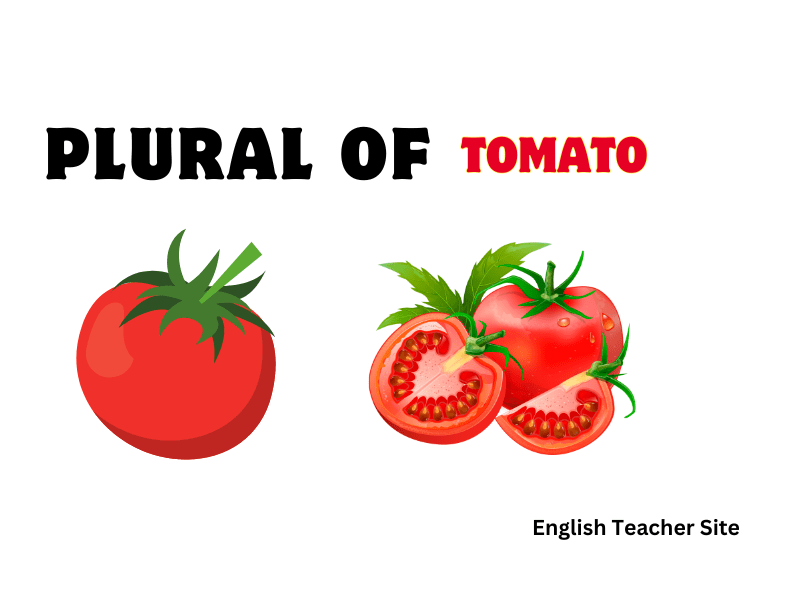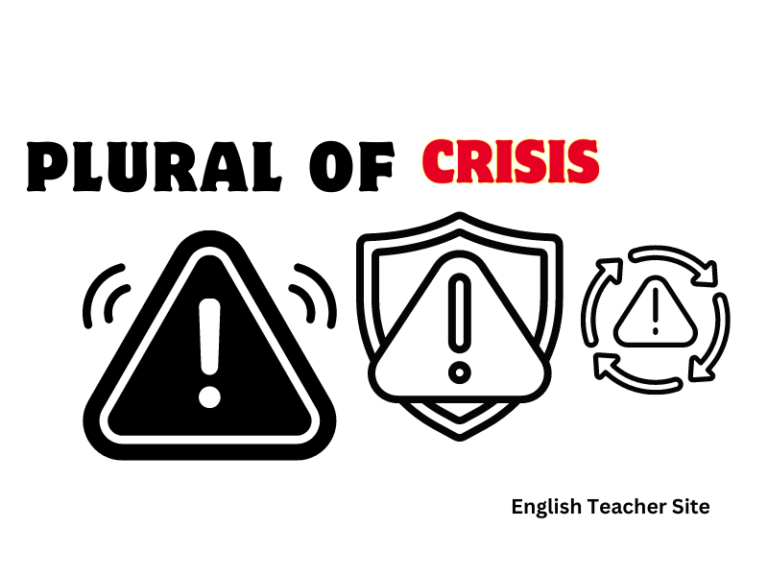What’s the Plural of Tomato? Unveiling the Correct Usage

- The plural of “tomato” is correctly spelled “tomatoes.”
- “Tomato” is technically a fruit, but commonly used as a vegetable.
- The word “tomato” hails from the Spanish “tomate,” originating from the Nahuatl word “tomatl.”
The English language is full of intricacies that can sometimes confound both native speakers and learners alike. One area in which these complexities arise is in the rules surrounding pluralization, particularly with nouns that end in “-o.” In the vast majority of cases, these nouns adopt an “-es” suffix to form their plural version. This rule applies to the word “tomato,” where the correct plural is “tomatoes”.
What’s the Plural of Tomato?
Nouns ending in ‘o’ can be tricky, as they do not always follow a single rule. There are some that simply take an ‘s’ to form the plural, while others take ‘es’. Here’s how “tomato” fits the pattern:
| Singular | Plural Rule | Plural |
|---|---|---|
| tomato | Add ‘es’ | tomatoes |
- Tomato sauce may contain several types of tomato.
Further examination of nouns ending in ‘o’ shows two patterns:
With ‘s’
- Solo → Solos
- Photo → Photos
With ‘es’
- Hero → Heroes
- Echo → Echoes
The word “tomato” follows the second pattern, likely due to its ending vowel-consonant combination.
Usage examples:
- I would like two tomatoes on my sandwich.
- How many tomatoes do we need for the salad?
Singular Form of Tomato
The singular noun “tomato” is derived from the Spanish “tomate,” which in turn comes from the Nahuatl language, spoken by Indigenous peoples in Central Mexico.
Tables illustrating the singular and plural forms in simple English often include “tomato” as an example due to its regular transformation into the plural form:
| Singular | Plural |
|---|---|
| Tomato | Tomatoes |
- Singular: Tomato
- Use: To denote one piece of the fruit
- Example sentence: She added a fresh tomato to the salad.
| Example Context | Usage |
|---|---|
| Raw | A single tomato |
| Cooked | One tomato |
Nouns Ending in –o
- Typically, if a noun ends with a vowel followed by –o, you would simply add –s to form the plural.
- However, when a noun ends with a consonant followed by –o, you usually add –es.
Here are two tables that illustrate common patterns for nouns ending in –o:
Simple Pluralization by Adding –s
| Singular | Plural |
|---|---|
| Studio | Studios |
| Zoo | Zoos |
| Video | Videos |
In these examples, the nouns end with a vowel plus –o, so you just add an –s.
Pluralization by Adding –es
| Singular | Plural |
|---|---|
| Potato | Potatoes |
| Tomato | Tomatoes |
| Hero | Heroes |
These nouns end in a consonant plus –o, which is why we add –es to form the plural.
Exceptions to the rules do exist. For instance:
- Solo becomes solos
- Piano becomes pianos
Here is a brief list of nouns ending in –o and their plural forms:
- Buffalo – Buffaloes or Buffalos (both are acceptable)
- Mango – Mangoes
- Volcano – Volcanoes
Understanding Tomatoes: Are They Vegetables or Fruits?
Tomatoes spark an interesting debate in the culinary and botanical worlds due to their characteristics. Although commonly used as vegetables in cooking, tomatoes are botanically classified as fruits. They develop from the ovary after the flower of the tomato plant is pollinated and contain seeds, much like other fruits such as apples or peaches.
Culinary Practices:
- In cooking, tomatoes are typically treated as vegetables.
- They are a staple in sauces, salads, and savory dishes.
- Rarely used in desserts due to their flavor profile.
Botanical Facts:
- Tomatoes are fruits because they contain seeds and originate from a flower.
- Classified along with squashes, peppers, and cucumbers, which also develop from the ovary of a flower.
| Botanical Classification | Culinary Classification |
|---|---|
| Fruits | Vegetables |
Examples of Tomato Used in Context
Here, specific instances are used to illustrate the correct usage of the noun in various sentences.
Singular Usage:
In sentences where there is only one tomato, the singular form is used. For example:
- She slices a tomato for her sandwich.
- A ripe tomato was on the vine.
Table 1: Singular Form in a Sentence
| Individual | Sentence |
|---|---|
| Girl | The girl picked a tomato from the garden. |
| Chef | The chef needs one more tomato for the sauce. |
Plural Usage:
When referring to more than one tomato, “tomatoes” is the correct form. Consider these examples:
- He adds tomatoes to the salad.
- The basket of tomatoes is ready for the market.
Table 2: Plural Form in a Sentence
| Quantity | Sentence |
|---|---|
| Several | Several tomatoes were too ripe. |
| Many | They harvested many tomatoes today. |
Usage in Different Contexts:
Culinary Settings:
- Could you pass the diced tomatoes?
- The recipe calls for two cans of crushed tomatoes.
Gardening Contexts:
- The tomatoes are thriving in the rich soil.
- Watering the tomatoes regularly is crucial for their growth.
Market Scenarios:
- She specializes in heirloom tomatoes.
- The vendor at the farmers’ market sells organic tomatoes.
Examples of Tomatoes Used in Context:
Below are varied examples showcasing the plural use of “tomato” in everyday contexts.
In the Kitchen:
| Ingredient | Usage in a Recipe |
|---|---|
| Tomatoes | Dice the tomatoes for the salsa. |
| Tomato Sauce | Two cups of crushed tomatoes are needed. |
From salsas to sauces, tomatoes serve as a versatile ingredient in numerous dishes.
In Gardening:
- Planting Schedule: Tomatoes should be planted after the final frost.
- Harvesting: When harvesting, gently twist the tomatoes off the vine.
Cultivating tomatoes requires knowledge of seasonal timing and harvesting techniques.
At the Grocery Store:
| Product | Description |
|---|---|
| Cherry Tomatoes | Buy one pint of cherry tomatoes. |
| Canned Tomatoes | Canned tomatoes come in various forms, including diced and whole. |
Tomatoes can be found in fresh or canned varieties, each suitable for different culinary uses.
In Nutrition Discussions:
- Health Benefits: Tomatoes are renowned for their lycopene content.
- Dietary Uses: Sliced tomatoes are a staple in salads and sandwiches.
Origin of the Word Tomato
The word tomato traces its etymological roots to the early indigenous cultures of Mesoamerica. The original term tomatl was coined by the Nahuatl-speaking Aztecs, which meant “the swelling fruit.” This Nahuatl word underwent several transformations through languages and time.
Spanish explorers brought the tomato to Europe, along with the Nahuatl word, which evolved into tomate. This Spanish version of the word first appeared in the mid-16th century. The English language borrowed this term in the early 17th century, initially spelling it as “tomate.”
The English spelling and pronunciation have been influenced over time. It is interesting to note the phonetic alignment with another New World plant, the potato, leading to the contemporary spelling, tomato.
| Language Origin | Term | Meaning |
|---|---|---|
| Nahuatl (Aztec) | tomatl | Swelling fruit |
| Spanish | tomate | Adapted term |
| English | tomato | Current use |
The use of the word in English literature began to swell in the 18th century, signifying the plant’s increasingly common place in European diets and gardens.
| Century | Development |
|---|---|
| 17th | Introduction to English |
| 18th | Spread in literature |
| Present | Standard English usage |
Sources
My name is Khamis Maiouf. I am the creator of the English Teacher Site, dedicated to providing valuable resources and insights for students around the world. With a passion for education and a commitment to helping students enhance their skills, I aim to make English teaching more effective and enjoyable for both educators and students.






